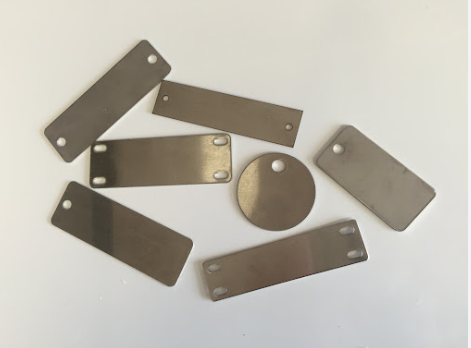If you’ve ever wondered why bolts sometimes snap or come loose, you’re not alone. Whether you’re changing a car tire assembling a bike or working on machinery, applying the right amount of torque is crucial. This is where a torque wrench comes into play. It’s a precision tool that ensures bolts are neither under-tightened nor over-tightened—keeping your projects safe, secure, and long-lasting.
In this guide, we’ll walk you through what a torque wrench is, why you need it, how to use it, different types available and how to choose the right one for your needs.
What Is a Torque Wrench?
A torque wrench is a hand tool used to apply a specific amount of torque (rotational force) to a fastener, such as a nut or bolt. Torque is typically measured in foot-pounds (ft-lb) or Newton-meters (Nm).
This tool is vital when precise tightness is necessary like in automotive work, engine assembly, construction and aerospace.
Without a torque wrench, you’re left guessing. And when it comes to bolts that hold critical parts together, guessing is dangerous.
Why Use a Torque Wrench?
Prevent Damage
Over-tightening can strip threads or break bolts. Under-tightening can cause parts to loosen over time. Both are dangerous.
Ensure Safety
Critical components like brake calipers or engine heads need exact torque settings. Incorrect torque could lead to system failure or accidents.
Follow Manufacturer Specs
Cars, bikes, and machinery come with manufacturer recommended torque specs. A torque wrench helps you meet these exactly.
Repeatable Accuracy
If you’re working on multiple fasteners (like cylinder head bolts) uniform torque ensures balanced pressure and better performance.
Types of Torque Wrenches
Different tasks call for different tools. Let’s break down the most common types:
1. Click Torque Wrench (Most Common)
- How it works: Emits a “click” sound and slight release when the set torque is reached.
- Use case: Ideal for auto repairs and mechanical work.
- Pros: Affordable, easy to use, widely available.
- Cons: Must reset to lowest setting after use to preserve calibration.
2. Beam Torque Wrench
- How it works: Uses a visual pointer on a scale to show the torque being applied.
- Use case: Good for low-budget jobs and occasional use.
- Pros: Inexpensive, no need for calibration.
- Cons: Harder to read accurately; not ideal for confined spaces.
3. Electronic (Digital) Torque Wrench
- How it works: Digital display shows the applied torque, with beeps or alerts.
- Use case: High-precision jobs, aerospace or advanced auto repair.
- Pros: Super accurate, logs data may vibrate or beep on reaching target.
- Cons: Expensive, requires batteries.
4. Dial Torque Wrench
- How it works: Has a dial indicator showing torque levels in real time.
- Use case: Laboratory, quality control or high accuracy tasks.
- Pros: Very accurate.
- Cons: Bulky and expensive.
5. Hydraulic Torque Wrench
- How it works: Uses hydraulics to generate extremely high torque.
- Use case: Industrial applications—wind turbines, pipelines, construction.
- Pros: Handles extremely large bolts.
- Cons: Costly, requires hydraulic power.
Key Features to Consider
Choosing the right torque wrench isn’t just about price. Here’s what to look for:
Torque Range
Match the range to your job. Most automotive work needs 10–150 ft-lbs. For bikes a smaller inch-pound range (like 20–200 in-lbs) is better.
Drive Size
- ¼ inch: Best for small fasteners (bikes, electronics)
- ⅜ inch: Common for cars and motorcycles
- ½ inch: Great for lug nuts, engine mounts
- ¾ inch+: Heavy duty industrial use
Accuracy
A good torque wrench should be accurate within ±4%. Higher-end models go to ±2%. Digital options offer the best accuracy.
Build Quality
Look for all-metal construction ergonomic handles and rust-resistant finishes.
Calibration Certificate
Reputable brands provide a certificate showing when the tool was last calibrated and its accuracy.
How to Use a Torque Wrench Properly
Here’s a step by step guide:
- Check the Torque Specs
Find the correct torque value in your owner’s manual or service guide. - Set the Torque Wrench
Rotate the handle (click type) or set the digital value. Lock it in place if needed. - Use the Right Socket
Always use a quality socket that fits your bolt snugly. - Tighten the Bolt
Apply smooth, steady pressure. Don’t jerk. Stop immediately when the click or alert happens. - Do Not Use as a Breaker Bar
Never use a torque wrench to loosen bolts—it can mess up calibration. - Reset to Lowest Setting After Use (for click-type wrenches)
This keeps the internal spring from wearing out.
Common Mistakes to Avoid
- Using the wrong torque range
- Ignoring the “click” or alert
- Not recalibrating regularly (every 5,000 uses or annually)
- Dropping the wrench (this can affect accuracy)
- Using extensions or adapters incorrectly
Top Brands Worth Considering
Here are some trusted brands known for quality and reliability:
| Brand | Best For | Notable Feature |
|---|---|---|
| Tekton | DIYers, auto repair | Affordable with solid accuracy |
| Craftsman | General home use | Lifetime warranty |
| Snap-on | Professional mechanics | Ultra-precise, costly |
| CDI Torque | Aerospace and industrial work | Made in USA, premium build |
| GearWrench | Automotive and heavy duty | Wide range, digital options available |
| Park Tool | Bicycles and small fasteners | Specializes in bike tools |
Torque Wrench vs Regular Wrench
| Feature | Torque Wrench | Regular Wrench |
|---|---|---|
| Precision | High (specific torque) | Low (no control) |
| Use | Torque-sensitive tasks | General use |
| Price | More expensive | Budget-friendly |
| Risk of Over-torque | Low | High |
Torque Wrench Maintenance Tips
- Calibrate annually or after significant drops.
- Clean with a dry cloth—avoid solvents.
- Store in a case to protect against dust and impact.
- Never exceed max torque range—even if the bolt needs more.
Conclusion: A Small Tool with Big Impact
A torque wrench isn’t just a fancy gadget—it’s a must have for accuracy, safety and professionalism in any mechanical job. Whether you’re a car enthusiast a professional technician or just someone who likes to get things right investing in the right torque wrench will save you time, money and a lot of frustration.
FAQs About Torque Wrenches
Q: Do I need a torque wrench for changing tires?
Yes. Lug nuts have a recommended torque (usually around 80–100 ft-lbs). Over-tightening can warp brake rotors; under-tightening can cause wheels to come loose.
Q: How often should I calibrate my torque wrench?
Every 12 months or every 5,000 cycles whichever comes first. If dropped recalibrate immediately.
Q: Can I use a torque wrench to loosen bolts?
No. This tool is designed to measure force in one direction. Using it to loosen can damage the mechanism.
Q: What’s the best torque wrench for beginners?
A click-style ½ inch drive torque wrench (e.g., Tekton or Craftsman) is perfect for beginners doing auto or household work.







